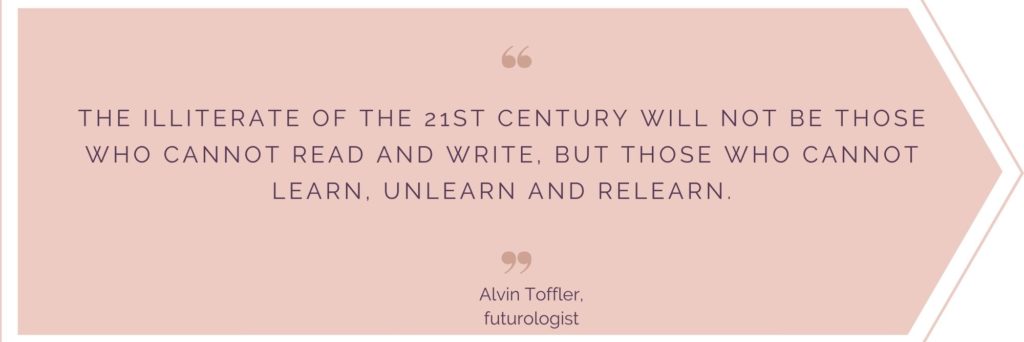An increasingly competitive business landscape, rising complexity, the digital revolution, and an aging workforce are reshaping the way we need to look at HR. Ever-accelerating change makes business management no longer cope with the challenges that come our way but much more of anticipating them.
If, as an HR department, you want to stay valuable for the business, you need to rethink how you can support the company to achieve its ambitious long-term strategy even better.
Which are the strengths of HR that support and facilitate the business strategy?
Strong employer branding
A strong employer brand is one of its most important assets to attain and attract talent, besides wages. Over the past several decades, employment has shifted from staying with the same company for a lifetime to a model where workers are retained only if they can add value to an enterprise.
Workers are now in charge of their personal and professional growth and development-one reason that people list "opportunities for learning and development" among the top criteria for joining an organization. Conversely, a lack of an L&D track is one of the key reasons people cite for leaving a company. Traditionally, learning focuses solely on improving productivity. Today, learning also contributes to employability.
Building a strong employer brand is a shared responsibility, but HR is often the face workers have. Early in the employee journey, first impressions are created at onboarding.
Value-based culture
As the workforce in many companies becomes increasingly changing and globally dispersed, HR can help to build a value-based culture and a sense of community. Millennials are particularly interested in working for value-based companies that contribute to society.
Value-based recruiting and career development
Companies prefer attracting and retaining T-shaped and M-shaped talent. T-shaped workers have a broad knowledge covering various domains/skills combined with in-depth knowledge of 1 specific area. M-shaped profiles are multi-skilled professionals with a deep understanding of multiple domains. The more letter combinations you make, the easier you can allocate the best fit for the job.
Improved function descriptions
Job descriptions need a switch from a checklist of tasks to creating adaptable role descriptors that focus on agile capabilities and cultural fit.
They are moving from organization-driven career paths to more flexible employee-driven career paths. HR will need to respond positively to employees' aspirations and ambitions and help them expand their skill set in line with the companies' priorities for the future.
Increased employee engagement
The most important way to engage employees is to provide them with opportunities to learn and develop new competencies. Research suggests that lifelong learning contributes to higher performance and happiness.
A happy employee is not always a productive employee. Higher performance relates when highly engaged employees are challenged and given the skills to grow and develop within their chosen career path. They are more likely to be energized by new opportunities.
Agile learning culture

As L&D experts, we will need to offer continuous learning focused on flexibility, collaboration, and speed to address changing business needs.
- Crafting and driving a culture that enables agility.
- Moving from a siloed skills framework to a cross-functional framework
- Transitioning to agile by moving from one-size-fits-all employee development plans to an employee and team-driven development path. Agile working requires a culture that encourages experimentation, risk-taking, and learning from failure.
Talent-based Agile teams
Let's make the transition from focusing on individuals to concentrating on teams. Fixed organizational structures are replaced with networked and flexible corporate systems.
HR can facilitate this by organizing team buildings that improve team cohesion. The HR BP also plays an essential role in assisting the manager in building the ideal team with the correct values and competencies to achieve the organization's strategic objectives.
Leadership development
A crucial role of HR is ensuring that the right people perform well in leadership roles at all levels. HR can facilitate this by developing programs to re- and upskill managers and transform them into future-ready role models.
Digital workplace
The digital transformation of HR is an inevitable component in the modern workplace. HR must focus on improving its processes to digitize workplace practices. HR can adopt new tools and technologies that enable hybrid working.
At the same time, L&D must be prepared to quickly launch capability-building programs, e.g., if workers require training on new technologies.
Blended learning journeys
To quickly integrate new skills and competencies, HR will implement a blended learning approach, bringing just enough learning within the workflow.
As a result, many L&D functions transform from stand-alone programs to learning journeys. Instead of fixed programs, HR offers continuous learning opportunities that include fieldwork, pre-and post-classroom digital learning, social learning, on-the-job coaching, workshops, and individual mentoring. The main objectives of a learning journey are to help people develop the required new competencies most effectively and efficiently and to support the transfer of learning to the job.
Strategic Workforce Management
HR will assess that current staff can achieve the objectives when business priorities are defined strategically. Are there enough resources, and do they possess the right skills and competencies to get the job done? HR can manage a scalable workforce by recruiting the best-in-class profiles and closing the capability gaps.
HR as a partner
To conclude, HR must embrace a broader role and transition from a support department to a strategic partner for the business.
Strategic HR partners can help drive individual, team, and organizational performance by:
- Connecting HR efforts and initiatives to business objectives
- Building HR programs, policies, and initiatives strategically
This ambitious challenge enhances the organization's overall performance and builds a best-in-class employer.
Go for success and become a strategic partner for life!
Enjoy the reading; feel welcome to add comments, thoughts, suggestions to this article.
Do you wish to receive more "food for thoughts"?
Subscribe yourself. As a gift, an e-book about digital leadership is waiting for you.
Wish to receive more "food for thoughts"?
Contact InnoVita. An e-book on digitaal leadership awaits you as a bonus.
